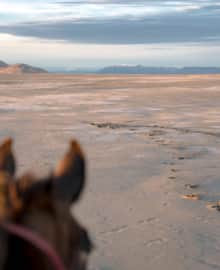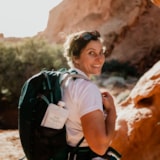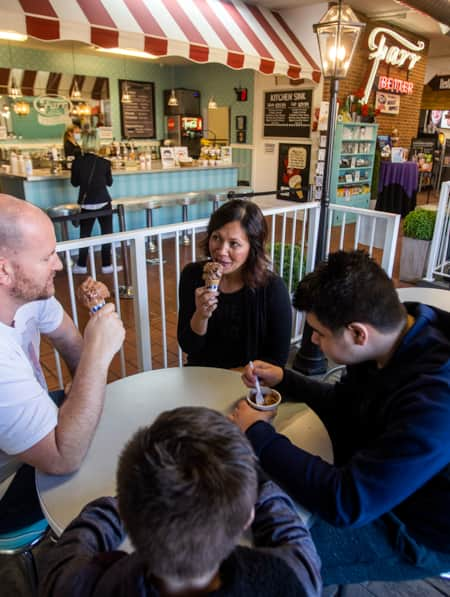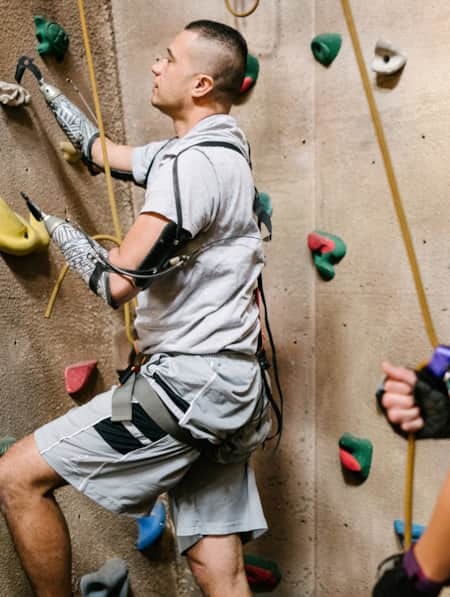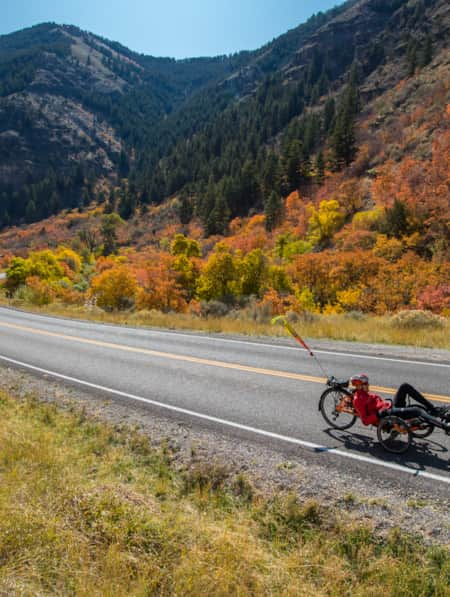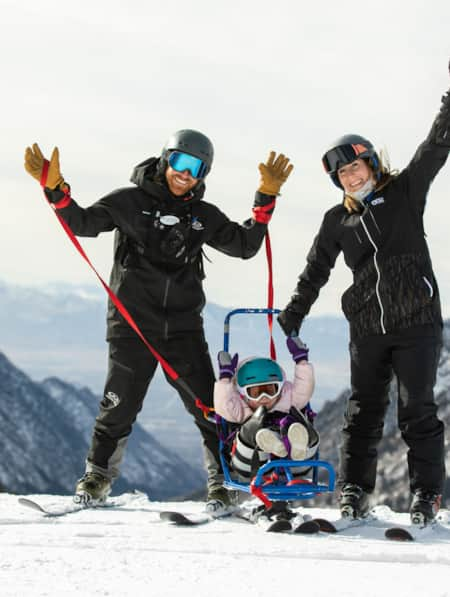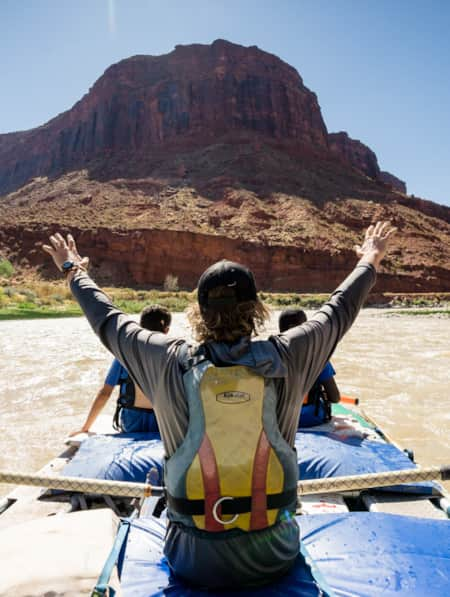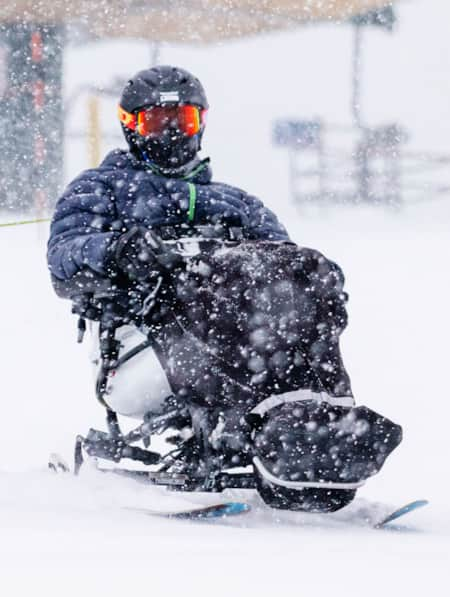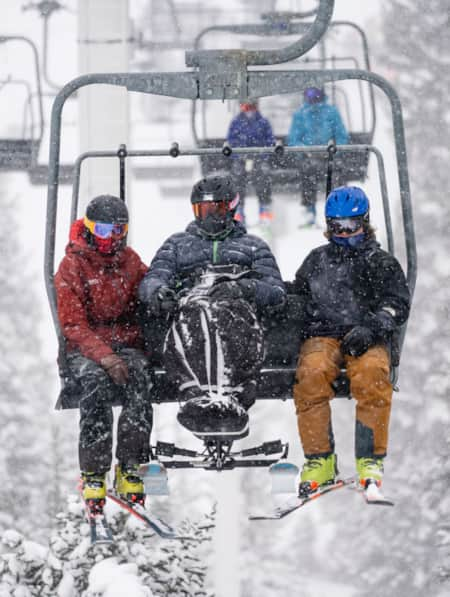Together They Climb
Utah’s most unlikely adventure family shows America that you don’t have to fit into the outdoors stereotypes to find your place on the trail.
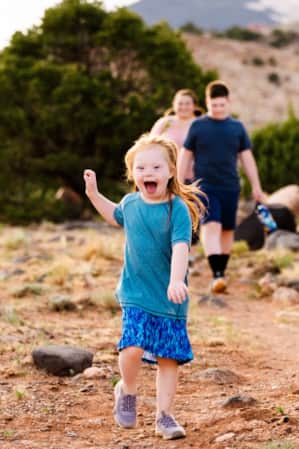
The first time Melody Forsyth tried canyoneering, things didn’t go so well. On a weekend adventure, her friends talked her into doing what they claimed was a beginner climb into a canyon near St. George. The plan was to rappel down into Yankee Doodle Canyon in the Dixie National Forest not far from Zion National Park, then hike out. Her friends, all experienced climbers, assured her it would be easy.
“All I remember is there we were, and I start going down over the cliff,” said the labor and delivery nurse from Herriman. “I’m crying and praying in Spanish. I was just really scared.”
Melody didn’t know much about climbing at the time. She didn’t have a helmet and quickly found out her gloves were too thin to help much once the rope started heating up. What she did know: At 5 feet 4 inches tall, and a 2X in clothing, she wasn’t who you would typically expect to see dangling from a rope on a rockface in Southern Utah. She also knew her husband’s older brother had died in a climbing accident 25 years earlier, so that added to her mounting anxiety.
About half way down the 70-foot descent into the Navajo sandstone slot canyon, things began to go really wrong. Her hands were burning and the too-small harness was cutting uncomfortably into her abdomen, making it hard to breathe. Then the rock wall in front of her feet dropped away and she was airborne. “At the top, I had been joking and saying things like: ‘If I die, find my husband a good wife.’ A third of the way down when my feet were no longer touching the wall, I just lost my mind.”
That’s when she fainted. Being top heavy, she flipped upside down, which left her friends scrambling to figure out how to lower her unconscious body safely to the bottom of the rappel. When she came to, the group was obviously relieved, but they still had to get her out of the canyon.
For Melody, the experience was another reminder of how gear manufacturers often don’t take plus-sized people into consideration. But by this time in her love-hate relationship with the outdoors, she was no stranger to feeling unwelcome in the world of adventure.
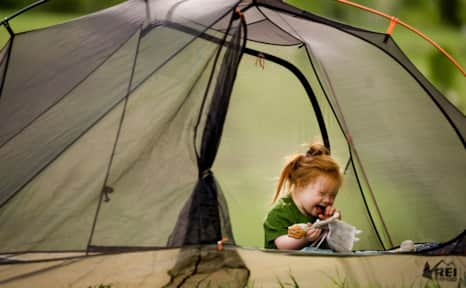
By 2017, when Ruby was 2 years old, she had already visited 12 national parks and 15 national monuments.
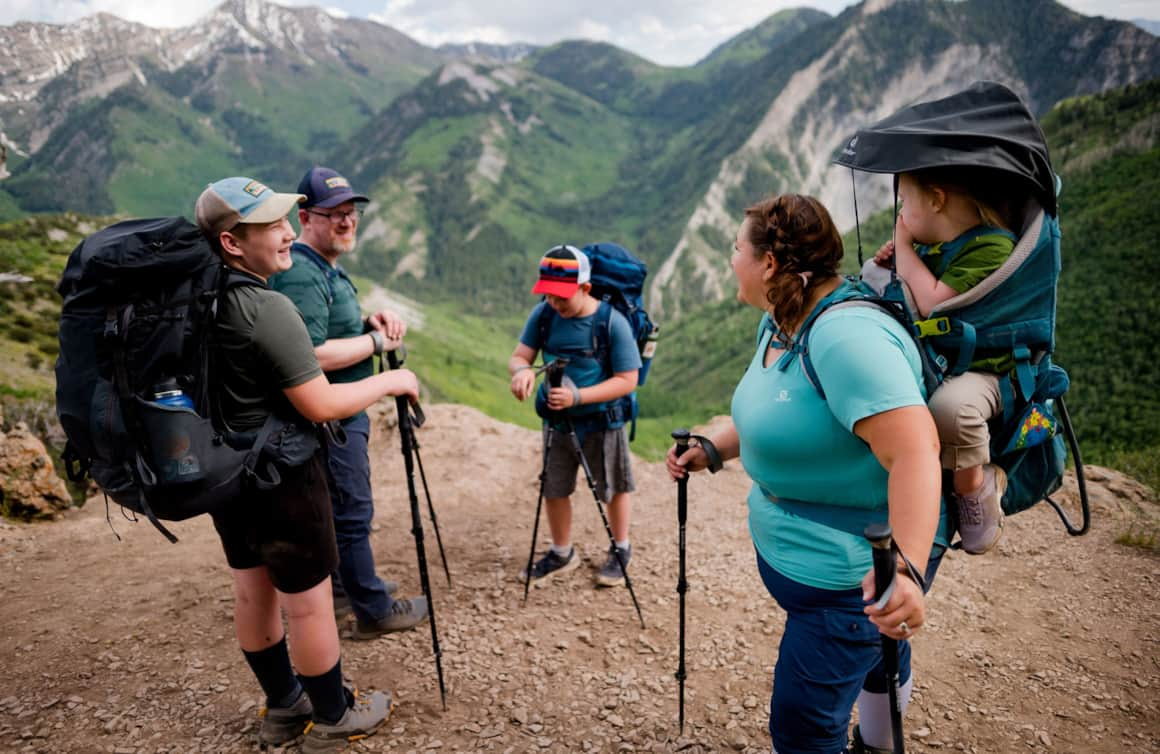
Melody Forsyth and her husband Vic hiking Buffalo Peak with three of their children.
Utah's Adventure Family
As a mother of four children, one who has Down Syndrome, Melody isn’t who you’d expect to appear in outdoor industry advertisements. But that hasn’t stopped companies such as L.L. Bean and Salomon from knocking on her family’s door.
Over the last three years, Melody and her husband Vic, along with their children (Angelina, Samuel, Logan and Ruby) have appeared everywhere. From REI’s website to a video playing on Maverik gas pump kiosks across Utah — the ads feature the Forsyths as one of the coolest outdoors families to follow.
In these ads, they can be seen rafting the Colorado River, hiking Capitol Reef National Park, ATV-ing through Sand Hollow and canyoneering in Kanab. Melody is most excited about how these images might be helping overturn expectations about what a typical Utah outdoorsy family looks like.
"As a mother of four children, one who has Down Syndrome, Melody isn’t who you’d expect to appear in outdoor industry advertisements. But that hasn’t stopped companies such as L.L. Bean and Salomon from knocking on her family’s door."
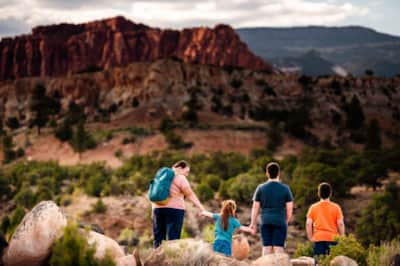
The Making of an Outdoors Enthusiast
But it hasn’t always been this way for Melody and her family. She grew up in Virginia and Oregon, where she remembers being around the outdoors, but never in it. Her family often took long drives to places like Crater Lake, the Oregon Coast or Mount Hood. Once they arrived, they took pictures and stood around looking at nature. Her family didn’t camp, hike or even get far beyond the pavement.
In college, Melody went for a hike and she hated it. She was hot, sweaty and didn’t have the right clothes. She couldn’t understand why anyone would choose to do such a stupid thing, is how she remembers the experience.
Vic was more familiar with the outdoors from having grown up in Utah, but said he was also a late bloomer. “I went to Arches as a Boy Scout, and went on a river trip once and that was unforgettable,” he said. “But I didn’t really experience Utah until Ruby came along and we started doing all of these things together as a family.”
Melody said her aversion to the outdoors was because she felt out of place due to her weight, and she didn’t have any help to find trails that were accessible. For Vic, the slow entry into the outdoors came with understandable hesitation due to his family’s past trauma. He was just 14 when they got the call that his older brother, who was an experienced climber and canyoneering enthusiast, died while rappelling into a canyon in New Mexico.
That experience made Vic wary of the outdoors, especially of high-adventure activities. But having spent his teens and 20s in Utah, it was hard to not join in a bit. He skied a few times a year, went mountain biking and later took up snowboarding.
Then in 2005, he and Melody got married. After they had kids, life got in the way. It wasn’t until the outdoors bug bit Melody ten years later that Vic actually began rediscovering his childhood passion for the outdoors.
Melody’s change of heart came in 2015, but it was a slow boil. It started with the family deciding to go for a hike near their home. At that time she was 26 weeks pregnant with Ruby, so they picked Donut Falls, a very popular trail in Big Cottonwood Canyon. It was Memorial Day weekend. The spring snowmelt left the ground muddy, and a crowded trail didn’t help matters. Melody said she was ready to quit after her family finished the one-mile walk from the car to the trailhead.
“I sent my family on ahead and sat down in the middle of the trail and waited for them,” she recalled. “All that was running through my head was ‘This is the stupidest thing.’ It’s muddy, it’s hard and it’s not for me.”
Her bad experience that day didn’t stop her from wanting to see beautiful places. A few months before Ruby was born, Melody felt the urge to visit Yellowstone National Park to see Old Faithful for her 40th birthday. The family made the trip without much advance planning. Upon arrival, they discovered the road to Old Faithful was closed. Disappointed, Melody vowed to return after their baby was born.
A few weeks later she and Vic learned their unborn child had an extra chromosome, which meant she would be born with Down Syndrome. Melody describes it this way: She felt like a balloon with a slow leak slowly deflating. She had dreams of family drives and visits to national parks, such as an upcoming trip to Zion. Melody told her family: “This is going to be our last adventure trip, so we better enjoy it.” How could they go into the outdoors with a special needs childs?
Then it happened: While eating breakfast at a hotel near the park, the Forsyths saw a family with a son in a wheelchair. That’s when it hit her. “I remember thinking to myself, well if they can do this, why can’t we?” Melody said.
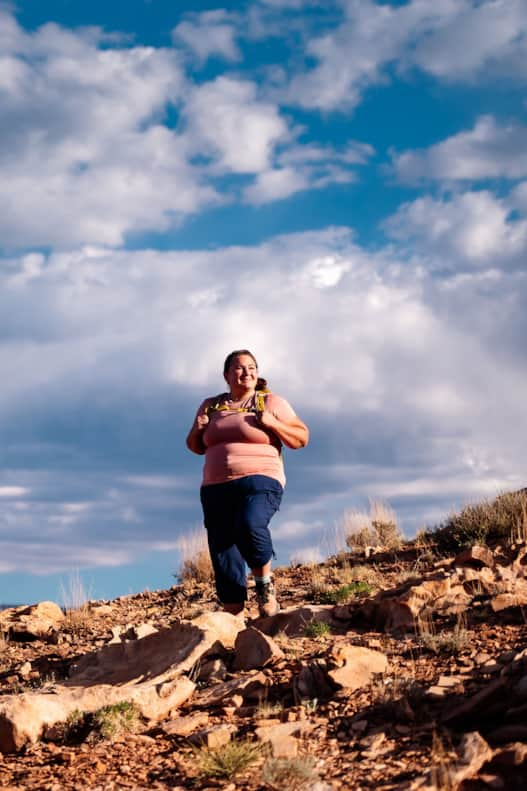
Melody Forsyth hiking Fishlake National Forest.
Photo: Michelle Craig
"I remember thinking to myself, well if they can do this, why can’t we?"
'Down With Adventure' Begins
And then Ruby was born.
The turning point came about nine months later. The doctor gave the go ahead for Ruby to be able to ride in a backpack in spite of feeding tubes. Melody decided it was time to revisit Yellowstone so she could finally see Old Faithful. She knew they would have to walk with Ruby because park trails weren’t stroller accessible.
“That’s where I really put her on my back for the first time and started walking,” she said. “It was hard, but I had more motivation to get her out there. I wanted her to see things. She made all of these sounds on my back, she was so happy. So we just kept going.” Melody noticed the “wow, you are a supermom” looks she got as she and Ruby passed by on the trail, which helped encourage her to push on.
When Melody got home, she searched Instagram looking for other families who had kids with disabilities to inspire her growing desire for more adventures. She didn’t find many families to follow.
Just as she had found a hole in plus-size people adventuring in Utah, she also didn’t see families with special needs kids posting photos of their adventures. This inspired her to start her own Instagram handle @downwithadventure and document her family taking trips into the outdoors with Ruby.
Quickly, people started following her, and then messaging her. This encouraged Melody to get outside more regularly. Soon she realized she didn’t have to go far to find beginner trails. Melody’s story spread, as she posted about the daily trials and tribulations of getting four kids out on a hike.
The more the family hiked, the more they liked it. They even decided to set a goal of getting to all of the country’s national parks. By 2017, when Ruby was 2 years old, they had already visited 12 national parks and 15 national monuments.
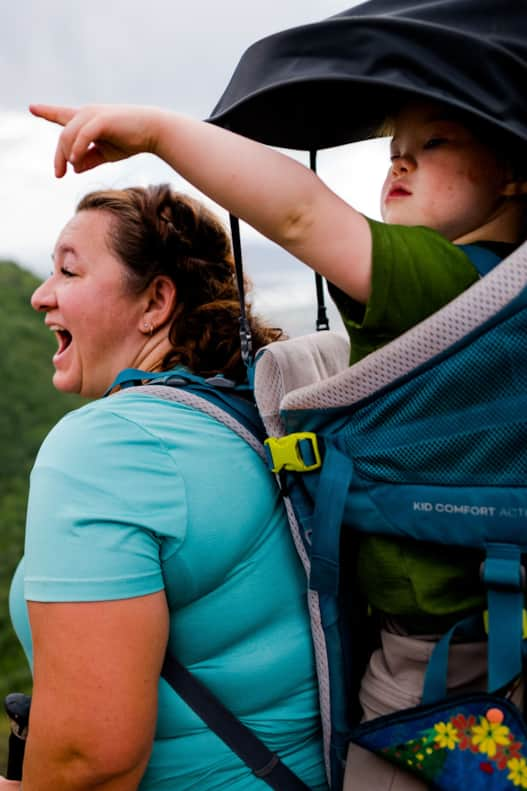
Melody Forsyth didn’t find many families with special needs kids posting photos of their outdoor adventures on Instagram, which inspired her to start her own handle @downwithadventure.
Photo: Michelle Craig
"The more the family hiked, the more they liked it. They even decided to set a goal of getting to all of the country’s national parks."
Pushing the Limits
Last year, Melody decided it was time for the family to tackle their fear of climbing. In spite of her past experience, she was convinced it could be fun, so she decided she would be the first to go for it. She found All Ways Adventure, a Kanab guide company, recommended as a good fit for plus-size climbers and those with disabilities. The outfitter’s owner, Nathan Mielke, assured her she could do it. “The first thing I noticed was that Nathan had plus-size harnesses,” she said. “That was so reassuring. He knew who I was and had seen videos about me. He believed in my abilities. Now I have been four times and it was something I never thought I would be able to do.”
Once Melody conquered her fear of being on ropes, she decided it was time for her family to give it a try, although she didn’t think she would be able to convince her husband.
"We talked a lot about it before we went," said Vic, who remembered really enjoying climbing and rappelling as a Boy Scout. "I was worried about the kids and them being totally safe and it was frightening for me. But I wanted to face that fear and I wanted them to experience it."
The first time they went as a family, Melody said she was mostly hesitant about Ruby, concerned that her young daughter wouldn’t understand the instructions. That fear was quickly dismissed when Ruby waved and started sliding down the rope fearlessly. "She was just like: 'Goodbye.' My boys were actually more nervous, but excited, too." After that day, the whole family was eager to go climbing again.
While the Forsyth family has adopted a “Let’s go for it” attitude, Melody feels like it helps to live in Utah where outdoor adventures are around them daily. “It’s not like you have to climb a 14’-er here to feel really accomplished,” she said. “There are just so many places to go with kids.” Easily-accessible information sources (including apps such as All Trails) help families find information about trails.
An increasing number of state and federal parks cater to groups who include members with disabilities, with features such as concrete trails, modified wheelchairs available on loan, as well as campsites and bathrooms that are handicap equipped. (Read: "Utah’s Scenery Offers a Backdrop for Accessible Family Camping")
“We still have some days that are rough with getting Ruby outside,” Vic said. “And we will have some more rough ones ahead of us, but we had no idea there would be so much out there in the outdoors for us.”
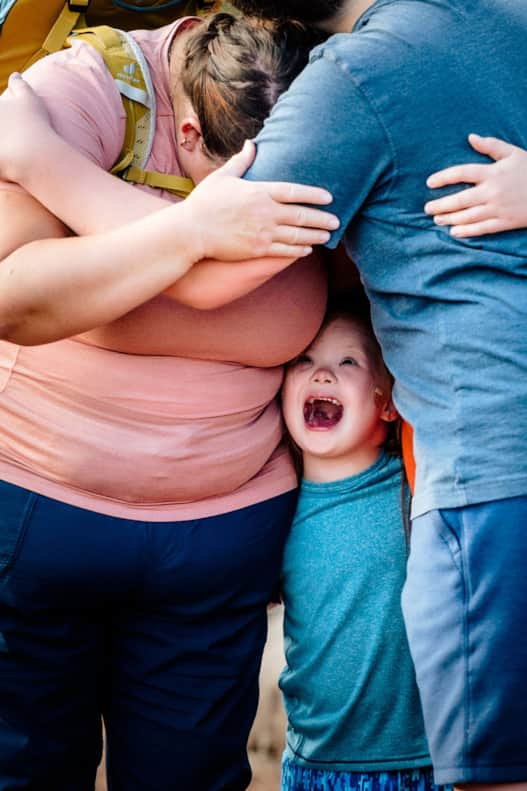
"We had no idea there would be so much out there in the outdoors for us," says Vic Forsyth.
Photo: Michelle Craig
"An increasing number of state and federal parks cater to groups who include members with disabilities, with features such as concrete trails, modified wheelchairs available on loan, as well as campsites and bathrooms that are handicap equipped. "
Sleeping Under the Stars
Last summer, the Forsyths decided to tackle another first. They went on an overnight backpacking trip to Clyde Lake (Read: "Start ‘em Early"). Their trip was complicated by the fact that Ruby often sleeps with oxygen to help her breathe regularly. As a nurse, Melody knew Ruby would probably be OK for a night, but her medical expertise also made her aware of potential risks.
On the morning of the trip, the family got a late start because packing took more time than they planned. By the time they hiked five miles to their campsite and set up, it was dark. All the kids were exhausted, but in the silence of the night, Melody said she could just feel how happy they all were. The next morning her sons begged her to let them stay another night. They hadn’t packed enough for a second day, so they hiked out, but she promised her family they would start planning the next backcountry overnighter as soon as they got home.
Now the Forsyths keep lists of trails they want to tick off across the state. These days, instead of convincing everyone to get outside, Melody reminds her family to plan some weekends at home so they can get things done around the house.
And as for Ruby, she’s getting big enough as she gets older that it’s hard to carry her very far. That means the family’s hikes are slower. Melody knows this stage is temporary, and that every hike their family takes helps Ruby get stronger on trail.
“I look at Ruby and just think: I never want her to say because I am this or that, I can’t do this activity,” Melody said. “She is the one who shows me time and time again that there are no limits. It’s usually me thinking she can’t do something — like rappelling — because she doesn’t understand it. And then she just goes for it.”
Follow Melody and her family at instagram.com/downwithadventure to see their next adventure.
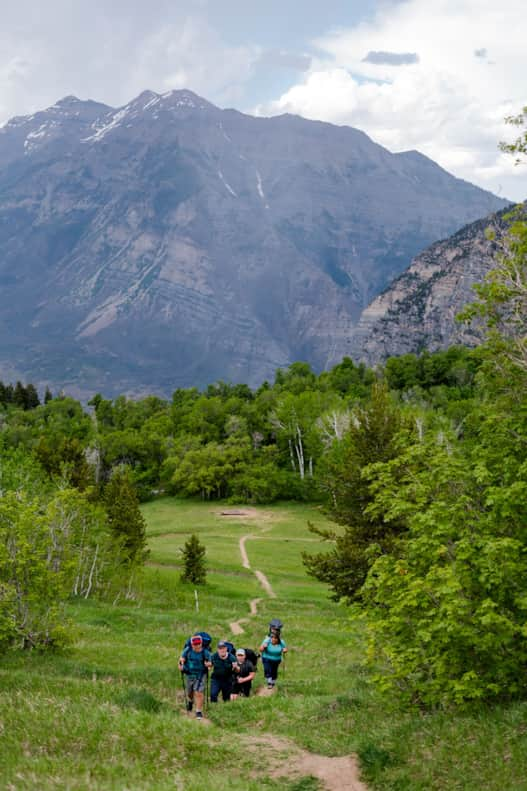
The Forsyths keep lists of trails they want to tick off across the state.
Photo: Michelle Craig
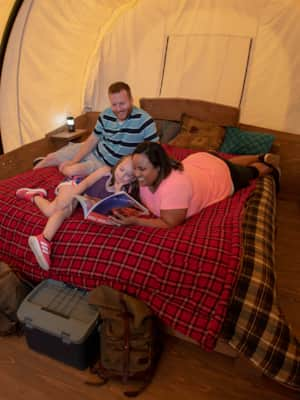
Utah’s Scenery Offers A Backdrop for Inclusive Family Camping
While Utah is known for its amazing outdoors, it also has resources that ensure that families and individuals of all abilities can access these places.
